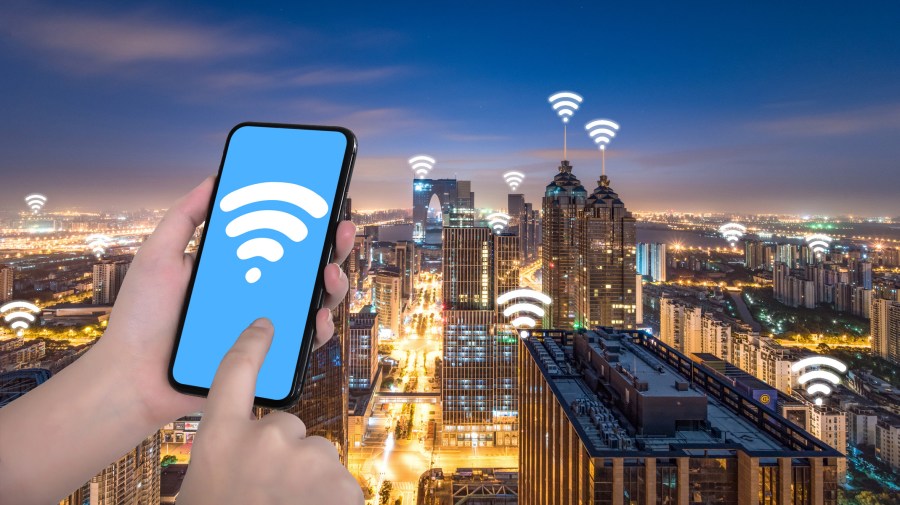What Affects Your Internet Speed?

In this modern world with high-tech gadgets rarely more than a few feet away, we spend a lot of time surfing, streaming, shopping and playing on the internet. When the internet and the world wide web first appeared in homes, everyone patiently waited for dial-up modems to connect and pages to load, never imagining the blazing speed that would one day be at our fingertips. As internet usage exploded into an unstoppable phenomenon, everyone quickly became spoiled by the ever-increasing connection speeds.
Today, it doesn’t take long at all for everyone to lose their patience and start complaining when their internet speed seems slower than normal. After all, it can be quite a headache when you want to do something online and your pages load at a crawl and your emails and files take forever to download. You want to solve the problem quickly, but slow internet speeds aren’t always caused by the same thing, which means you first need to identify the problem. Let’s take a look at the main reasons for slow internet speeds.
Equipment Needs to Be Rebooted
We’ve all heard that inevitable question from computer techs: “Have you tried turning it off and back on?” As much as you might want to grind your teeth in frustration when you hear it — of course, you tried that! — the question gets asked for a very good reason. Turning your router or access point off and then back on can reboot it back to optimal efficiency by forcing a fresh, new connection without requiring you to redo all your settings. This is often the best approach for eliminating a hardware glitch that causes a connection problem.

The easiest way to ensure a complete reboot is to simply unplug the power cord from the back of the router, wait 30 seconds and then reconnect it. If you have a separate router and modem, unplug them both and wait 30 seconds. Plug the modem back in first and give it a chance to finish booting — usually at least 60 seconds — before plugging in the router.
The same concept applies to laptops and other electronic devices that connect to your home network. If they run for long stretches without a break, you might be able to regain some processing speed by restarting them. Faster processing speeds generally lead to faster network connections as well as improved overall functionality.
Router Needs to Be Reset
In some cases, a simple reboot won’t resolve the problem. For numerous technical reasons, routers occasionally experience glitches that will magically disappear by completely resetting the device using one of two procedures. You can usually perform a soft reset on your router by simply unplugging the cable that connects to internet service for a few seconds and then plugging it back in, forcing the router to establish a new connection to the internet. This process often works very well when the issue is a simple connectivity issue.

If this milder reset doesn’t resolve your problem or you need to reset administrator passwords or security keys, you can perform a hard reset to restore the router’s software to its factory default settings. If you have a separate modem, disconnect it from the router before performing a hard reset. Locate the Reset button — usually on the back or bottom — and press and hold it for 30 seconds. You may need something small and thin, like an unfolded paper clip, to push the button. This method requires you to re-enter your security key, username, password and any customizations after the router restarts.
Devices Are Too Far from the Router
This particular problem can be simple to figure out, but it’s not always easy to resolve. There is a definite correlation between your internet speed and your distance from the router. In many cases, your position in your home is flexible, and you can simply move closer to the router if you want a faster connection. If you need maximum speed for your work — or just to minimize your annoyance — you should set up your primary computer zone in the same room as your router.

That all sounds simple enough, but sometimes it’s easier said than done. If your perfect home office with the perfect amount of natural light is purposefully tucked away in a corner far away from your family’s chaos, then you might not be willing to relocate it. Fortunately, you can explore ways to boost your Wi-Fi signal to try to improve your connection in sluggish zones. Start by verifying that the firmware on your router is up to date and considering whether you can relocate it to a more centralized location.
Dual-band routers also operate at 5GHz in addition to the much more common 2.4GHz. Try switching to that band to cut down on interference from other devices and appliances. In a similar vein, many modern routers will automatically adjust the channel to the least congested option to achieve the best signal, but some may require you to change them manually. If you must change the channel manually, try switching to other channels.
If your router only has an internal antenna, try adding an external one to boost the signal strength. Additionally, a Wi-Fi range extender or mesh Wi-Fi system can substantially boost your router’s signal to help it reach all the farthest corners of your home.
Too Many Devices Are Connected at Once
You already know that when you’re traveling down the highway, the more traffic you encounter, the slower you have to drive. The same is true for internet congestion. If you have a lot of devices connected to your bandwidth at one time, it creates the digital version of a traffic jam. The slow-down gets even worse if several people are hogging data by downloading or streaming large files on multiple devices at once.

The remedy for this problem generally involves controlling and limiting the internet usage for the people in your home during peak times. If you work at home and need the internet, then make your home a no-internet zone for everyone else until you’re done. If your kids are the bandwidth hogs, set time limits on their use and limit them to one device at a time. (It will be good for them in other ways as well.) If you still have issues and you don’t want to expand your service plan, then you may have to set specific times for members of the family to use the internet. Don’t forget to make sure you don’t have unwanted intruders sneaking onto your network and using your bandwidth as well.
Too Many Large Downloads at the Same Time
Even if you only have a few people using the internet at the same time, your internet connection could slow to a crawl if all of them are running large downloads at once. If your spouse is downloading work files while your son watches an online basketball game and your daughter watches funny YouTube videos, you might experience some buffering if you try to stream your favorite TV show at the same time. It all depends on the quality of your initial speed before all the downloading.

To solve this problem, save your large file downloads for times when other people aren’t trying to use the internet, such as late at night after everyone has gone to bed. You could also invest in a router that supports Quality of Service (QoS), a feature that allows you to set priorities for how devices in your home use the internet. For example, you could set streaming movies to take priority over file downloads.
Other Household Items Interfere with the Signal
In some cases, other items in your home are the culprit when it comes to diminishing your internet speed. It’s not always easy to figure out what’s causing the interference, but you can start by considering some common offenders. Microwaves, which mostly operate at 2.4GHz, are frequently a problem. Fortunately, these appliances aren’t usually on for long, and you can be patient until the popcorn is done. Older cordless phones may cause problems as well, but newer models typically use a lower 1.9 GHz band. Some baby monitors use 2.4GHz, so you might need to choose a 900MHz model to avoid issues.
Make sure your router is in an open area, and try to keep other electronic devices away from it. For example, don’t place it near any appliances or a powerful stereo system. If you continue to have problems, a dual-band router capable of transmitting at 5GHz might be well worth the investment.





